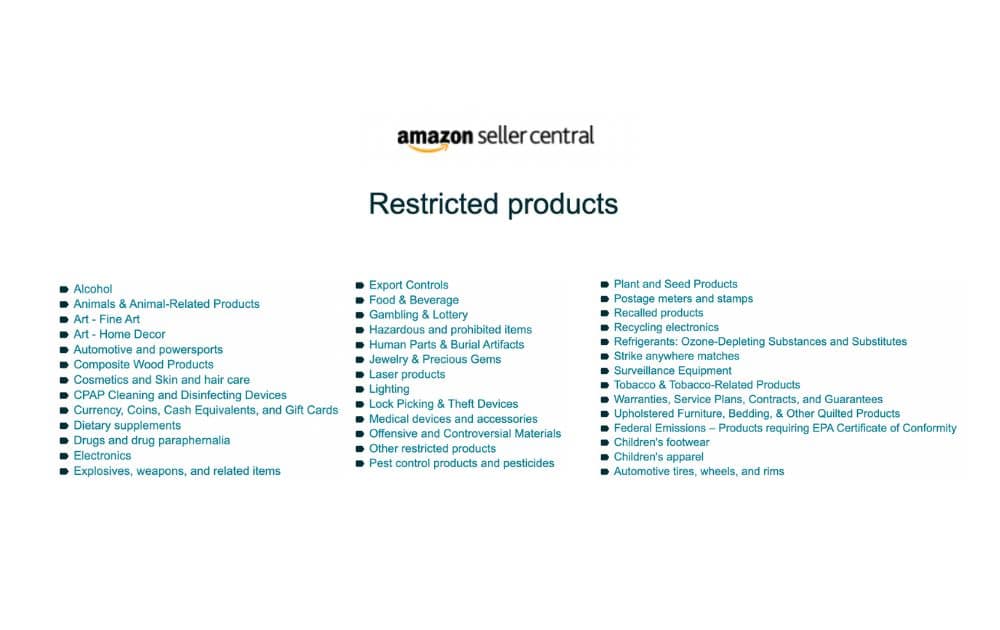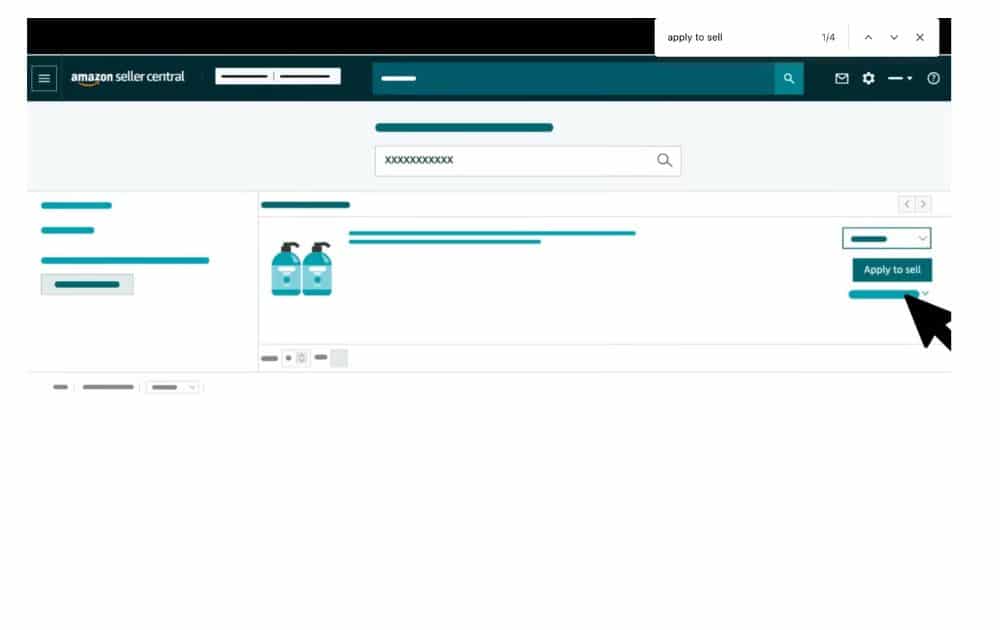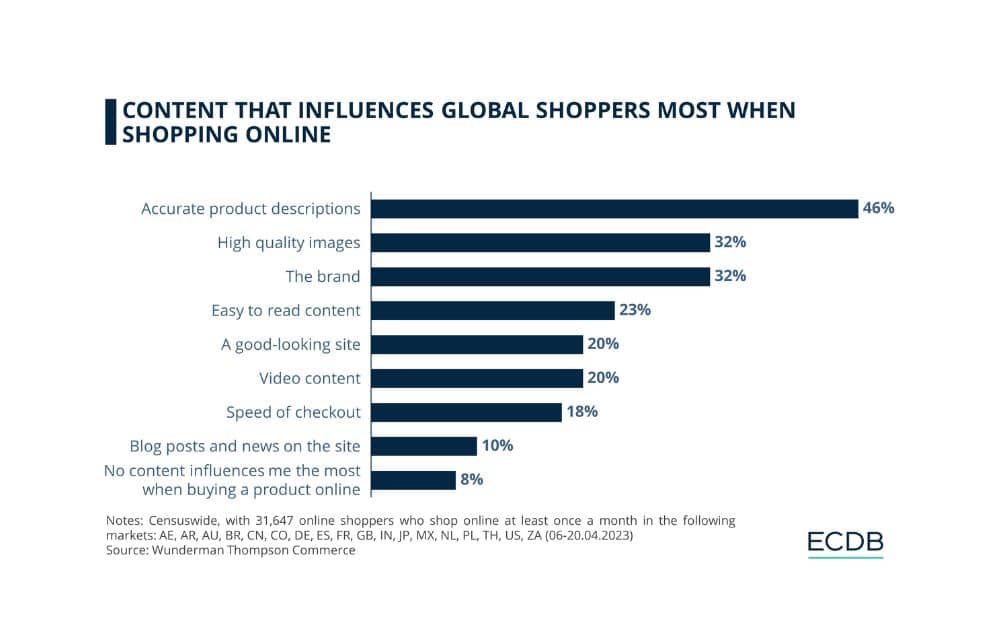Diving through the vast sea of Amazon’s marketplace reveals a curious realm of Amazon restricted products – a segment both intriguing and vital for savvy sellers.
This exclusive zone, governed by rules and gated access, draws sellers to explore its depths.
Why are some products on Amazon cloaked in restrictions, and how does one earn the key to unlock their potential? The allure lies in what these products are and the strategic advantages they offer to those who navigate their waters correctly.
Let’s demystify the world of Amazon-restricted products, guide you through the intricate approval process, and offer a roadmap to turn these unique challenges into lucrative opportunities.
What is an Amazon Restricted Product?
Amazon restricted products are items that require approval from Amazon before they can be sold on the marketplace.
Unlike prohibited products, which are a no-go zone due to legal or safety concerns, selling restricted products only needs specific approval, often due to the following:
- Safety concerns
- Legal regulations
- Product quality standards
The approval process ensures that only qualified and verified sellers can list these products.
Amazon’s restrictions are meant to safeguard both the marketplace and customers from illegal, unsafe, or low-quality products. In essence, the Amazon restricted products policy is a careful balance between offering a diverse range of products and maintaining a safe, trustworthy shopping environment.
For instance, a toy for children in the U.S. must comply with federal safety standards, and cosmetics must meet stringent quality guidelines. These restrictions also extend to certain categories that demand seller vetting for quality assurance.
Benefits of Selling Amazon Restricted Products
Selling restricted products may involve a more stringent approval process, but it also offers benefits:
- Reduced Competition. Since restricted categories have barriers to entry, there are typically fewer sellers, which means less competition for those who gain approval. This can lead to better visibility on Amazon.
- Higher Profit Margins. Due to the lower competition in restricted categories, sellers often enjoy higher profit margins. With fewer sellers competing on price, there’s more room to optimize pricing strategies.
- Niche Market Access. Restricted categories often cater to specific niche markets, providing access to targeted customer groups. Sellers can capitalize on these niche markets, which might be underserved or have high demand.
- Enhanced Customer Trust. Products in restricted categories are often subject to stricter quality and safety standards. Successfully selling these products can enhance your brand’s reputation and build customer trust.
- Opportunity for Brand Differentiation. Selling in restricted categories can differentiate your brand from competitors. It shows that you meet higher standards and can offer unique or specialized products.
How Do I Know if My Amazon Product is Restricted?
You can find an Amazon restricted products list on Seller Central, depending on the marketplace you’re selling in.

It’s vital to note that the restricted products lists aren’t static and overarching. In fact, it varies from country to country, reflecting the diverse legal landscapes of each marketplace.
This means that an item under Amazon restricted categories in the United States might not be restricted in the United Kingdom, and vice versa.
Understanding and navigating Amazon’s restricted products landscape, including Amazon FBA restricted products, becomes an exercise in both compliance and strategy for sellers aiming to capitalize on these potentially lucrative, yet less competitive, market segments.
Amazon Restricted Products | Ungating Process
If you want to know how to sell restricted products on Amazon, here’s a step-by-step guide to help you navigate the process.
1. Research the Specifics of Your Product Category
The first crucial step is determining if your product falls within Amazon restricted products. Familiarize yourself with the specific restrictions within each restricted category, as well as Amazon’s compliance and safety standards. These regulations are in place to ensure that only safe, legal, and high-quality products are sold.
For example, electronics might have safety standards, while beauty products might require proof of ingredients and compliance with health regulations.
If you’re unsure about your product’s classification or the applicable regulations, consulting with a legal expert or a compliance professional can provide clarity on Amazon restricted products policy.
2. Have a Professional Seller Account
Amazon restricts the application for selling certain product categories to Professional Sellers only. This is because these categories often require more sophisticated selling practices and adherence to strict compliance standards.
That said, you need to set up a Professional Seller Account on Amazon to apply for approval in restricted categories.
3. Prepare the Necessary Documentation
You’ll need the necessary documentation that proves compliance with Amazon’s stringent standards and regulations. These documents may include:
- Safety certifications
- Invoices from manufacturers or suppliers
- Proof of authenticity
- Compliance with specific standards
- Product testing reports
- Insurance documentation
- Trademark and branding documents
- Detailed product descriptions
- Inventory details
It’s crucial to note that each product category might require different types of documents, so understanding and gathering these is key to a smooth approval process.
4. Request Approval for an Existing Product
Here are the steps to request approval for existing Amazon restricted products:
- In your Seller Central account, select Inventory and then Add a Product.
- Use a relevant identifier (like UPC, ISBN, EAN, JAN, or ASIN) to locate your product.
- If approval is needed, a Show Limitations link will appear in the search results. Click this to view the listing prerequisites.
- After reviewing the requirements, choose the condition of your product and initiate the approval request by clicking Apply to Sell.
- Fill out the application form. You may be asked to provide additional information and documentation, such as safety certifications, compliance documents, purchase invoices, or even photographs of the product.

5. Monitor Your Application Status
You can check the status of your application in Seller Central. If approved, you can start listing and selling your product in the restricted category.
Remember, even after approval, continuous compliance with Amazon’s policies is crucial. After all, Amazon’s policies and restricted product lists can change. Regularly review these policies to ensure ongoing compliance.
How Do I Get Approved for Restricted Items on Amazon?
Here are a few tips to increase your chances of getting approved for Amazon restricted products.
Ensure Product Quality
Perform thorough quality checks on your products. Ensure they meet all quality standards and are free from defects. This is crucial for maintaining customer trust and compliance with Amazon’s standards.
Apart from increasing your chances of getting approved to sell Amazon restricted products, ensuring quality can also help rake in sales.
Data reveals that quality (32%) and price (30%) emerge as the primary factors influencing consumers during online shopping.

Network with Other Sellers
Engage with other Amazon sellers, especially those who have successfully sold restricted products on Amazon. They can offer practical advice and insights based on their experiences.
Be Proactive in Compliance
Don’t wait for issues to arise. Be proactive in ensuring that your products and practices comply with Amazon’s guidelines at all times. This hands-on approach can help prevent potential issues that might arise during the approval process.
Build a Strong Seller Profile
Maintain excellent seller performance metrics. After all, a good track record for order fulfillment, customer service, and positive reviews can enhance your credibility when applying to sell Amazon restricted products.
Leverage the Amazon Insights Program
Utilize the Amazon Insights Program, if available, to gather valuable customer feedback and insights on your products. This program can provide targeted customer surveys and feedback, which is extremely useful for understanding customer preferences and improving your products.
For restricted items, this feedback can be invaluable in ensuring your product meets customer expectations and adheres to Amazon’s standards.
Regularly engaging with Amazon Insights can also demonstrate your commitment to continuous improvement and customer satisfaction. These are traits that Amazon values, especially for sellers in restricted categories.
Use Accurate Product Descriptions
Ensure your product listings are clear, accurate, and detailed. This step includes ensuring correct categorization, precise descriptions, and specifications. Accurate listings can prevent misunderstandings about the nature of your products.
On-point product descriptions will also score points with your customers. In fact, it’s the leading factor that influences purchasing decisions, with 46% of shoppers ranking this as the most important.

The Bottom Line
Exploring the realm of Amazon restricted products may seem daunting, but the rewards can be significant. By diving into this specialized segment, sellers can access markets with less competition, potentially higher profit margins, and the chance to cater to niche customer bases.
In the end, it’s not just about overcoming hurdles to get approval. It’s about embracing an opportunity to differentiate your brand, build trust with your customers, and establish a stronghold in a less crowded space.
Author




